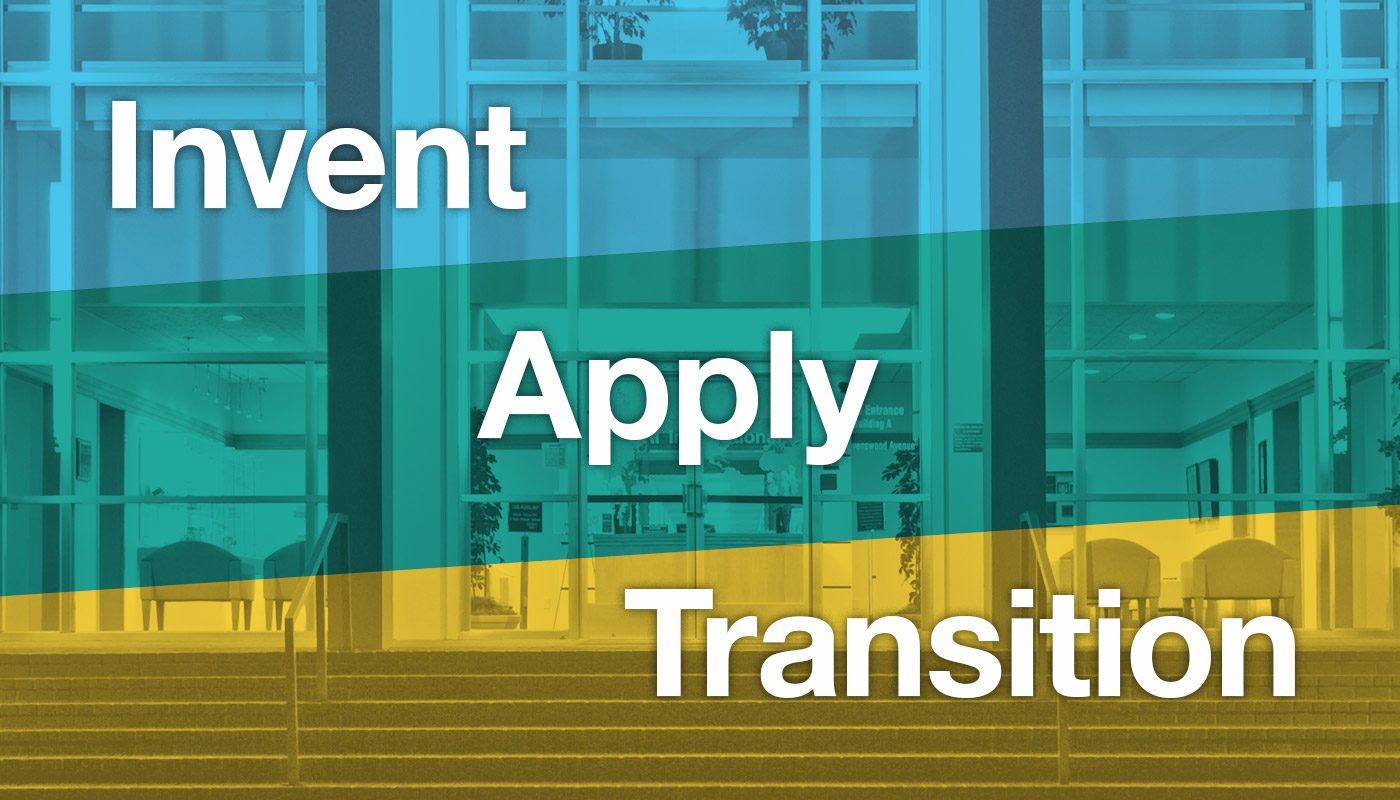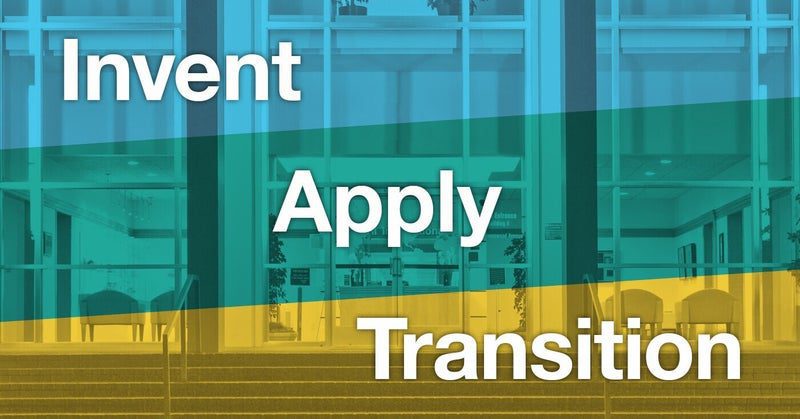
The deft execution of this three-pronged business model is at the foundation of the nonprofit’s world-changing technological advancements
SRI International has been behind an enormous array of inventions and discoveries over 75 years, pioneering life-changing advancements in everything from computer science to healthcare. The successful execution and delivery of consistent, reproducible, high-quality ideas and innovations require special attention to the research process. A bedrock of that approach has been SRI’s unique business model of Invent, Apply, Transition.
This model derives from and expands on a concept known as Pasteur’s quadrant and encapsulates the process of moving from pure research to real-life applications of science and technology.
Pasteur’s quadrant
The practical application of science gives us modern privileges such as medicine, technology and materials. The 1997 book Pasteur’s Quadrant by Donald E. Stokes discussed the eternal battle between pure blue-sky scientific research, practical applications and scientific funding. Stokes created a series of quadrants to show how different approaches to performing scientific work produced varying outcomes. In the model, Stokes placed Bohr into the quadrant of pure basic research and Edison into pure applied research. Other organizations most commonly follow Edison’s quadrant.
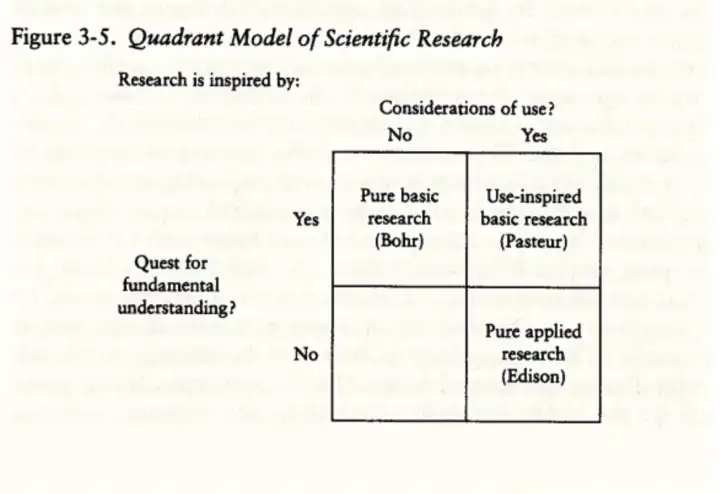
Source: Pasteur’s Quadrant by Donald E. Stokes
Pasteur, the book’s namesake, was placed into a quadrant where “basic research work was inspired by use,” and here one will find SRI. Pasteur used pure scientific research to create real-world applications, which then fed data back into his blue-sky research. Pasteur was an applied scientist who excelled in innovative scientific research. But Pasteur was also able to take this research and create vital practical applications.
Stokes adds Pasteur into a quadrant that represents simultaneous motivation of research by discovery and invention; iteration between the two helps develop both. Stokes demonstrated through the use of Pasteur’s quadrant that research for understanding vs. research for application should be about cooperation and finding the bridge between the two.
In a simplified construct of basic research, each area is effectively sequential; invent, apply then transition. In many cases, the inventions derived may have no short- or mid-term application — indeed the applications, if any, may be decades away.
In most pure applied research cases, the transition is planned, and then the body of already available basic research is sourced to identify ways to solve the problem. The time duration for completing the applied research is often 12 to 24 months, leaving little time for new basic research to be developed.
In use-inspired basic research, there is a continuous interplay between invention and application. This results in new research that builds upon basic fundamental inventions but has a clearer and often shorter timeframe than basic research, to move towards application.
A case study in Invent, Apply, Transition: DARPA’s Warrior Web & Seismic
In the mid-2010s, exoskeletons were being actively evaluated for use in the military. There was a key issue: while exoskeletons could provide a soldier with extraordinary capabilities, they often did that at the cost of causing exhaustion after a very short duration of use.
DARPA posited a use-case by asking the question: Would it be possible to create an exoskeleton that could be worn for 8 hours in real-life settings, and simultaneously reduce the overall metabolic load that a soldier experiences over that time duration.
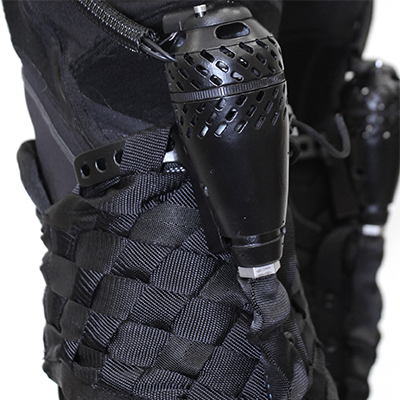
SRI applied its approach to the discipline of use-inspired basic research. By evaluating the current solution sets, they derived key insights on what needed to be invented. Unlike insects, humans have bone on the inside, with muscles on the outside. The existing alternatives skeletons-on-the-outside, i.e. exo-skeletons, were fundamentally incompatible with the objective function. A paper biomechanics study confirmed that human-like exo-muscles could theoretically meet the objective.
Once SRI determined that exo-muscles were the solution concept, a number of new technologies had to be invented to create the prototype solution: how does one transmit load across soft structures, can one apply forces with millisecond timing precision, etc.

With the above project, SRI achieved an initial “product-user fit” — in that the user (in this case a soldier) was able to successfully reduce their metabolic load significantly over an eight-hour tour.
SRI also recognized that to make this technology commercially viable, it would need to transition this to a market facing entity. A new “user” would have to be defined, and product-user fit would need to be reconfirmed. Pricing, production and maintainability would need to be developed. The use-inspired basic research that had already been performed had converted this to an “applied research” problem. This conversion to product required focus and drive — SRI created a startup, Seismic, with external investors to bring the research to market.
What is SRI’s Invent, Apply, Transition?
Use-inspired basic research requires unique processes, distinct from those that optimize basic research, or pure applied research.
SRI achieves this by using a simple yet highly effective business model, known as Invent, Apply, Transition that expands on the concepts outlined in Pasteur’s quadrant. In particular, this model uses an iterative process to link knowledge and productization, and adds a feedback loop from the productization to enhance new knowledge creation processes.
At its most basic, the Invent, Apply, Transition model describes a fluid, collaborative process in which SRI seeks to create new technologies that represent major advancements in scientific understanding/capability and that have real-world applications.
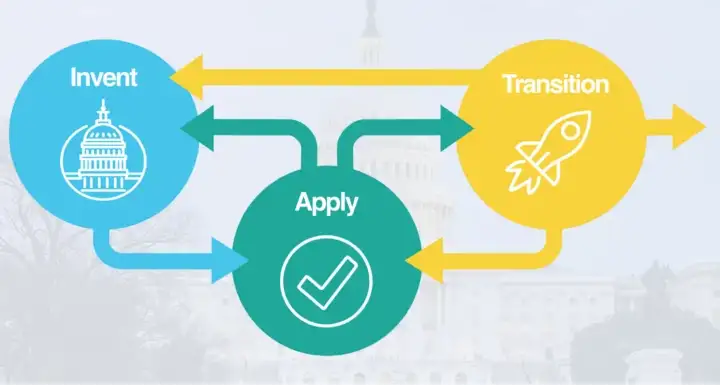
The inter-related stages of Invent, Apply, Transition can be explained thus:
SRI research teams identify areas where advancements in science can lead to a significant improvement in society. A key element of this is all about the process of ideation, and spending time understanding the use-case and the need. The goal is to invent a solution concept that is likely to address an unmet need.
Apply sets out to prove the solution and show potential applications. This is where advancements are made to the problem at hand. A key element of Apply is to get to product-user fit, where one demonstrates that the technology satisfies the need of its principal direct users. This is often done through a proof of concept.
The Transition stage is all about the route to market and getting to product-market fit. This is a relatively well-understood methodology and is often done in conjunction with large corporations and startups.
“Like Pasteur, SRI uses use-inspired basic research,” explains SRI President Manish Kothari. “We have a use in mind and take a lot of basic research to understand the use. We ensure transition possibilities are considered in the earliest stages of the invention process. The iterations that connect core basic research and commercialization is what places SRI in a unique position in science and industry.”
The three-pronged business model of Invent, Apply, Transition allows SRI to fluidly facilitate the collaboration, research and implementation throughout any stage of a project, ultimately working to bring big ideas to fruition.
